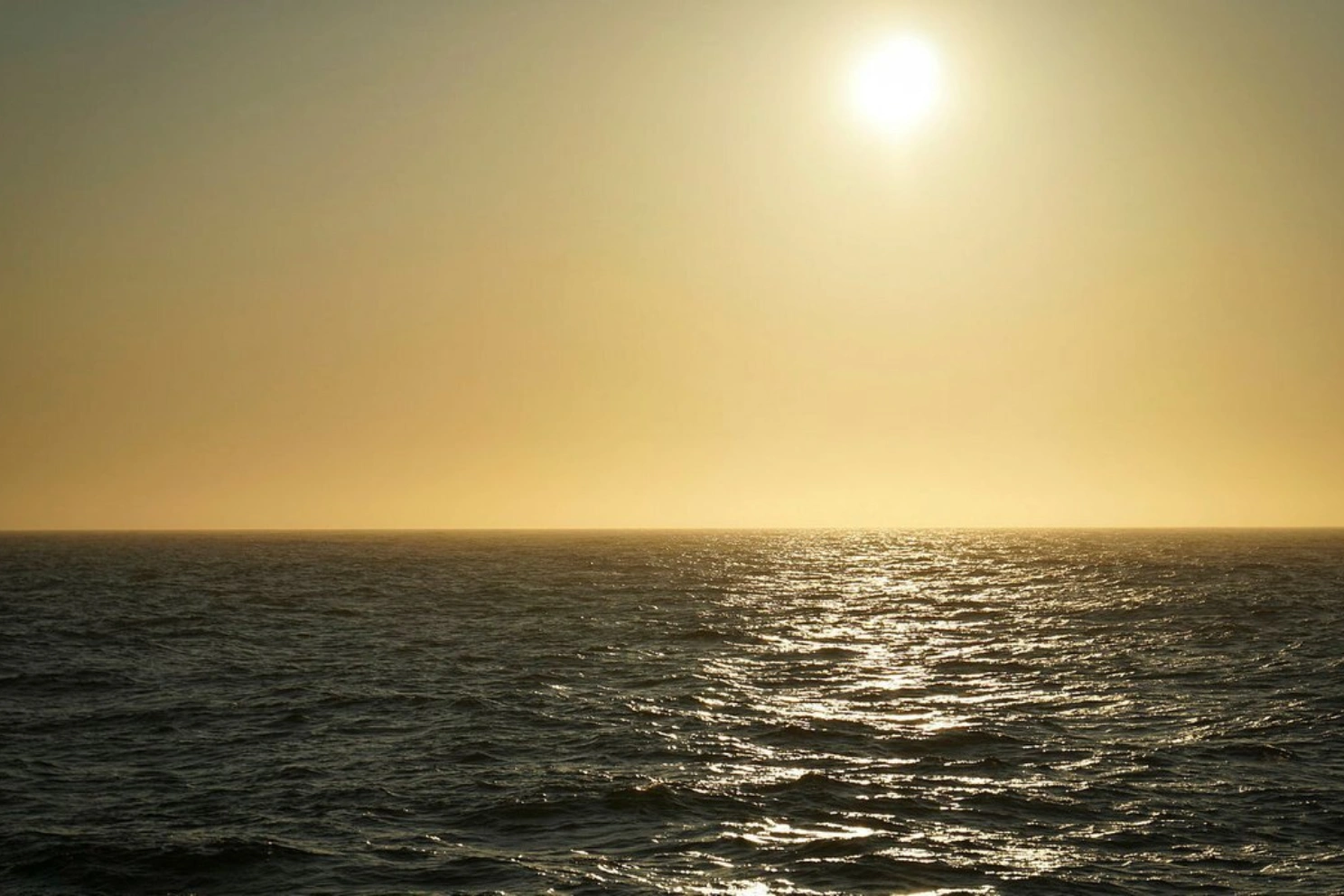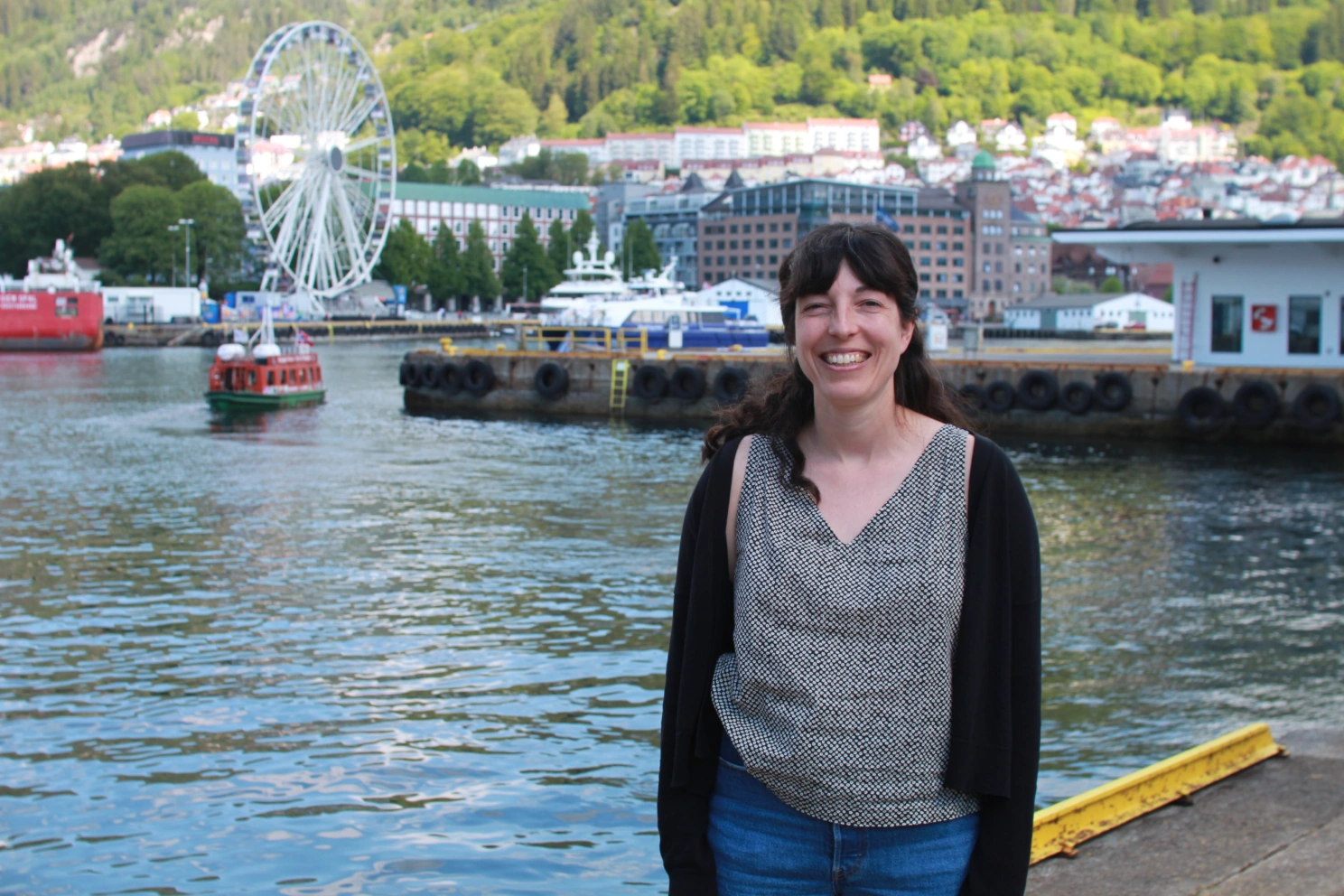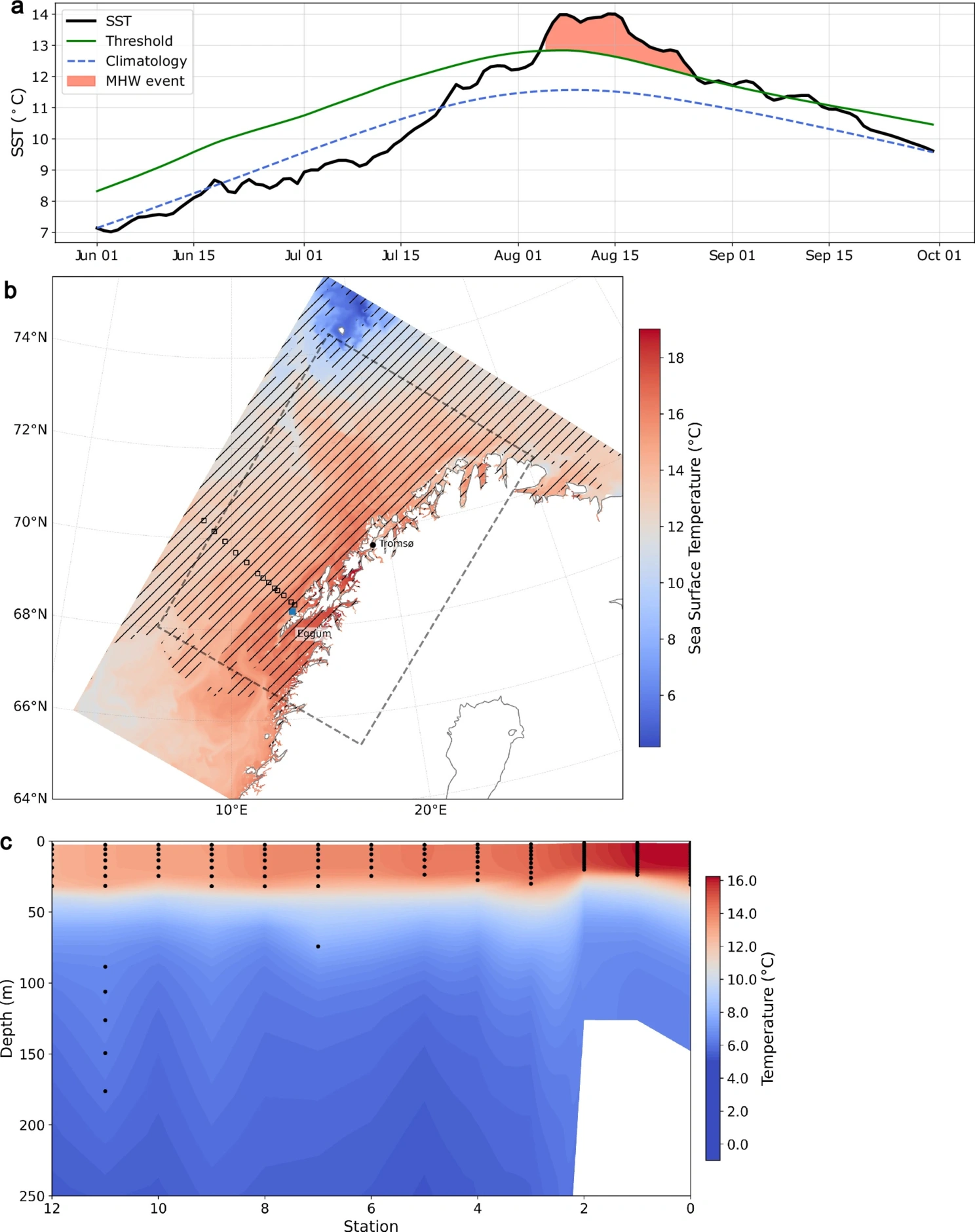"Perfect Storm" under the midnight sun triggered marine heatwave and explosion of salmon lice
On August 5, 2024, a marine heatwave began along the coast of Lofoten in Northern Norway. It lasted for 21 days, with sea temperatures measured at a record high. This caused salmon lice to thrive.
Publisert 21. August 2025
Written by Øystein Rygg Haanæs, Institute of Marine Research

Sun around the clock, clear skies, calm water, and abnormal conditions in the North Atlantic last year. Illustration photo: Stine Hommedal / IMR
The sea temperature was measured at a record-high 18°C – a full 4 degrees above normal.
“It’s the highest temperature recorded in the area since the Institute of Marine Research established monitoring stations here in the 1930s,” says marine scientist at the Institute of Marine Research and the Bjerknes Centre, Silvana Gonzalez.
Scientists now know what caused the heatwave.
In August 2024, Lofoten experienced unusually calm winds, unusually warm temperatures, and unusually clear skies.
“These are perfect conditions for a marine heatwave. When there’s no wind, the layers in the water column don’t mix as they normally do when it’s windy. And when there are no clouds – with the sun shining almost around the clock – the surface layer of the water heats up quickly,” says Gonzalez, who also is affiliated with the Bjerknes Centre for climate research.
Extreme Pressure Differences in the North Atlantic
In addition, climatic extremes in the North Atlantic contributed to the warming.
We’re talking about differences in sea-level pressure between Iceland and the Azores – a phenomenon scientists call the North Atlantic Oscillation (NAO).
“We say the NAO is positive when the difference between the low pressure over Iceland and the high pressure over the Azores is greater than usual. In July and August 2024, the pressure difference was the highest ever recorded since measurements began in 1948,” explains Gonzalez.
The heatwave began in the upper 10–15 meters of the water near the coast of Lofoten. Over time, it expanded northward, away from the coast, and deeper into the ocean.
“It eventually reached depths of 30–50 meters, and in shallow areas of Lofoten, it extended all the way down to the bottom,” says Gonzalez.
The heatwave ended in Lofoten at the end of August.
“In the southern Barents Sea, it continued at least until the end of September, which is as far as our current analyses go,” says Gonzalez.

Silvana Gonzalez works with marine heatwaves at the Institute of Marine Research and the Bjerknes Centre. Photo: Tori Pedersen / The Bjerknes Centre
Salmon lice in overdrive
For the salmon farming industry in the north, the marine heatwave meant anything but a good summer.
Researcher and salmon lice expert at the Institute of Marine Research Anne Dagrun Sandvik reports that the number of salmon lice in fish farms along the coast of Northern Norway began to rise sharply at the end of July.
Eventually, the growth became explosive throughout the region.
Higher temperatures = faster reproduction
The pace of the salmon lice life cycle depends on temperature. At higher temperatures, the lice mature more quickly and begin reproducing sooner.
In addition, the lice become more aggressive and attach more easily to the salmon when it gets warmer. This leads to more lice—both adult and juvenile—at the same time.
"Even an increase of one degree affects the salmon lice, and when temperatures rise 3–4 degrees above normal, as measured by both fish farmers and our monitoring stations, the effect becomes very significant," says Sandvik.

Figure b (middle): The horizontal and vertical extent of the marine heatwave for August 15th, the date of maximum intesity. Illustration: Silvana Gonzalez.
Multiplication of salmon lice and lice larvae
She highlights lice numbers from the area stretching from Kvaløya in Troms to Loppa in Finnmark as an example.
"Fish farmers count lice every week and report the numbers to the Norwegian Food Safety Authority. In this area, the lice numbers have typically stayed below 2.5 million adult female lice during the summer. A couple of weeks into August, the number had doubled, and by early October, it was estimated that there were 20 million adult female lice in the farms here," says Sandvik.
The researchers also calculated how many lice larvae were being produced at the peak of the outbreak.
"In the farms north of Kvaløya, 60 million adult female lice collectively produced 105 million lice larvae per hour during the first week of October," Sandvik explains.
Important to understand the mechanisms
"The explosion of salmon lice is just one example of how marine heatwaves can deeply affect marine ecosystems, fisheries, and aquaculture," says Gonzalez.
The heatwave in 2024 was caused by a convergence of unusual circumstances. At the same time, marine heatwaves have increased in both frequency and intensity in Norwegian waters over the past decades.
"That’s why it’s important to conduct more research into the local and regional phenomena that trigger marine heatwaves. In the long term, the goal is also to be able to forecast them as early as possible, so that industries like aquaculture can take precautionary measures," Gonzalez explains.